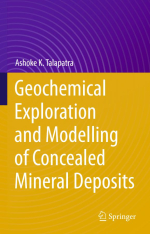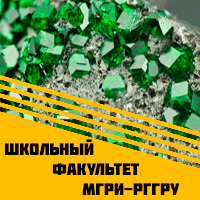Добрый день, Коллеги. Важное сообщение, просьба принять участие. Музей Ферсмана ищет помощь для реставрационных работ в помещении. Подробности по ссылке
Geochemical exploration and modelling of concealed mineral deposits / Геохимическая разведка и моделирование скрытых месторождений полезных ископаемых
In a country like India various types of earth science data have been generated for about 170 years by the Geological Survey of India (GSI) and subsequently by its much younger sister organizations like Oil and Natural Gas Corporation, Indian Bureau of Mines, Atomic Minerals Division, Central Ground Water Board etc. and a number of public sector undertakings like Hindustan Copper Limited, Hindustan Zinc Limited etc. In addition to these various earth science related organizations, State Departments of Mines and Geology and a number of academic institutions and Geology Departments under the various universities and Indian Institute of Technologies have come up after the independence of India. Hence, over the years, voluminous data have been generated on different aspects of earth science. For example huge amount of data has been generated by detailed petro-chemical studies of granite and associated mineralization and similar other information in different parts of India since middle of twentieth century (Banerji and Talapatra, 1966; Talapatra, 1966; Talapatra, 1968). This is the case for almost all the countries of the world where geological investigations have been taken up. These data are mostly recorded in publications, research notes and unpublished reports of various organizations in different countries. But for meaningful study and utilization, such large volume of data should be documented in a structured form in computer compatible format so that data retrieval from the different modules of the database may be quick and easy. Obviously, this type of database will be a very large one (Fig. 1.1, modified after Talapatra, 2001) with provisions to keep the different types of geological information in a structured form. Then, any type of statistical and geostatistical study may be done with these data to arrive at the desired inferences (Agterberg, 1974; Agterberg et al., 1972). This will be further useful if we can carry out computer-based 3-D modelling of mineral occurrence and deposit, which will be discussed in the subsequent chapters. <...>




